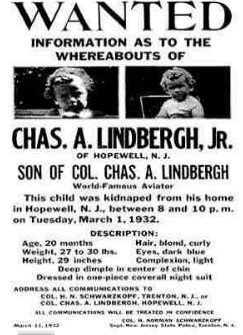Learn
The Crash
Economy Appears Healthy
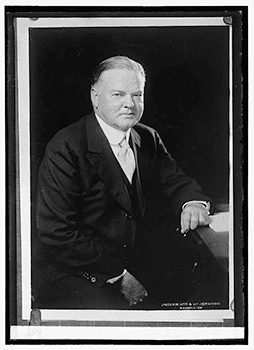
When President Hoover was elected, he promised America would have "continued prosperity" as seen throughout the 1920s.
In 1928 stocks had risen by almost 11.4 billion. Unemployment was below 4% and the value of workers' wages had risen by 40% since 1914.
The economy seemed to be roaring along into the late 1920s.
Economy Appears Healthy

John J. Raskob wrote an article entitled Everybody Ought to be Rich in which he said, "anyone not only can be rich, but ought to be rich" in our booming economy. The 1920s "seemed" to still be roaring along.
However, the Great Depression started under President Herbert Hoover.
Economic Danger Signs/Causes of Depression
There were several economic danger signs which ultimately led to the Great Depression:
Uneven Prosperity/Unstable Economy
- Wealth was unevenly distributed.
- A few families had a majority of the money.
Buying on Credit
- Personal debt increased because so many Americans were buying on credit or borrowed money during the 1920s.
Playing the Stock Market/Over Speculation
- The stock market boom was based on borrowed money and optimism, not real value.
- A "Get-Rich-Quick" attitude prevailed in the 1920s.
- Speculation, the practice of making high risk investments in hopes of getting high gain, was widely used in the market.
Too many goods. Too little demand
- Industries produced more goods than consumers bought.
- Overproduction meant that many goods would not be sold.
Trouble for Farmers
- Falling farm prices were a problem as early as the mid-1920s. Farmers could not repay the debts owed on their farms, which meant trouble for rural banks.
- Many farms were sold at auction.
Trouble for Workers
- Many factory workers still suffered from long work hours and low wages.
The Great Crash

On October 24, 1929, worried investors began to sell their stocks and prices fell. This day is known as Black Thursday.
Politicians, businessmen, and bankers tried to keep investors from overreacting, but on the following Tuesday, October 29, 1929, Black Tuesday, the stock market crashed.
Stock prices fell as investors raced to sell all their stock. About 16.4 million shares were sold or traded that Tuesday. This Great Crash, or collapse of stock market, continued beyond Black Tuesday triggering the Great Depression.
The Stock Market Crashes
Americans lost a total of $30 billion in the Great Crash. The Dow Jones Industrial Average, which is the average measure of stock prices of major industries, dropped from an all-time high of 381 in September 1929 to 198.7 by November 1929.
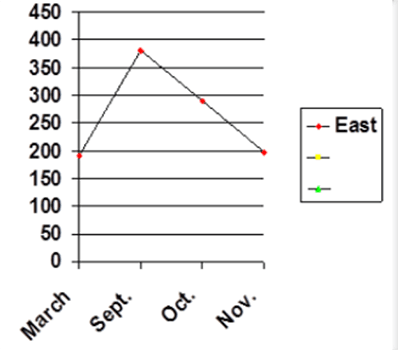
Almost 13 million shares had been sold on Black Thursday. But on October 29th, Black Tuesday, prices plummeted and more than 16 million shares had sold.
Over the next two years, banks closed and people lost confidence in the banks. People withdrew their money out of the banks, employers stopped producing, and deflation, a fall in prices, began.
The Effects
The Crash Affects Millions

The stock market crash triggered the Great Depression, a severe economic decline that lasted from 1929 until the United States entered World War II in 1941.
The Great Depression resulted in economic turmoil throughout the world for years. Millions of people lost their jobs, farms, and homes.
Impact on Workers
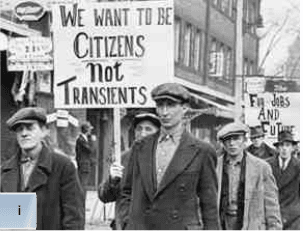
Eventually, all levels of society felt the effects of the depression including laborers (blue-collar workers) and professionals (white-collar workers). Business profits fell, so factories had to close. Unemployment skyrocketed, leaving approximately twelve-million Americans unemployed by 1932.
The Gross National Product (GNP), or the total value of goods and services a country produces every year, dropped from $103 billion in 1929 to $56 billion in 1932.
Unemployment Skyrockets
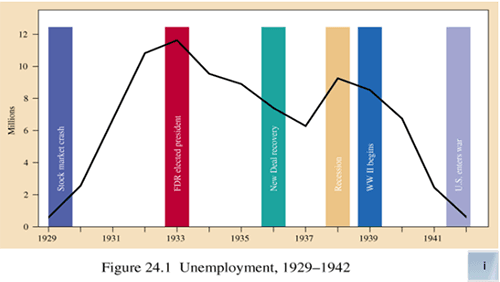
Farm Distress
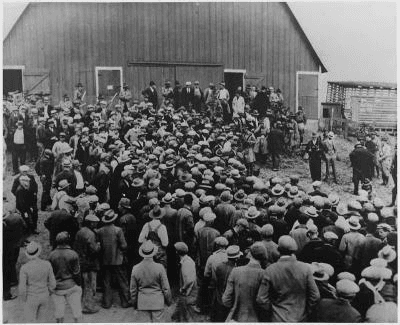
Low food prices meant farmers could not make enough money to pay their mortgages. Many farms were sold at auction.
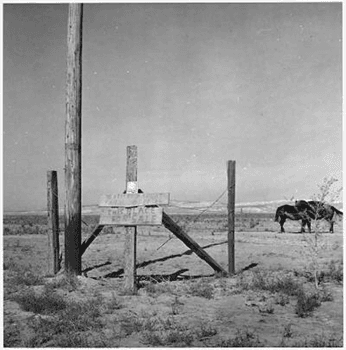
Others were forced into foreclosure or abandoned by families since crops could not be planted or harvested.
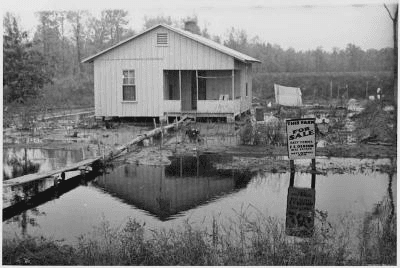
Global Impact
At the time of the Great Crash, international economies were very interdependent, meaning they counted on trade with other countries to maintain their economy. When the United States' large economy fell, the economies of countries around the world collapsed also.
Bank Failures
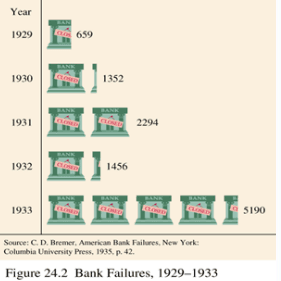
Bank failures rose drastically between 1929 and 1933. People rushed to the banks to withdraw their money after the crash.
Thousands of banks closed their doors because they could not return their depositors' money.
Millions of savings accounts simply disappeared because there was no government protection for bank deposits.
Runs on Banks
Imagine going to the bank to withdraw your life savings and being turned away because the bank has simply shut its doors.
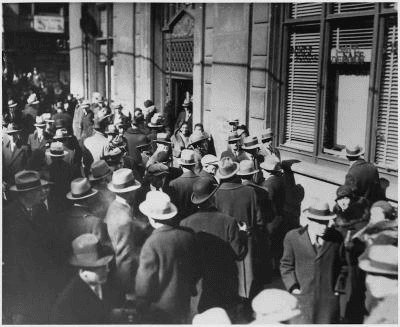
Hoover's Limited Strategy
President Hoover believed that extending government into the lives of its citizens was NOT the solution to the problems with the economy. Instead, he called for voluntary action, which eventually failed because businesses could not fulfill "voluntary" promises to keep wages high.
When voluntary action did not work, Hoover tried more government action. His main attempt to ease the Depression was the Reconstruction Finance Corporation (RFC).
The RFC was established to loan money to banks, insurance companies, and railroads to keep them in business in order to help others stay in business.
Hawley-Smoot Tariff
President Hoover also imposed the Hawley-Smoot Tariff, which was the highest import tax in history.
It was designed to persuade Americans to buy more of our own goods rather than foreign products; however, it backfired because European countries raised their import taxes in response.
Ultimately, U.S. sales overseas decreased and the economy suffered even more. The Hawley-Smoot Tariff was a failed policy by Hoover that contributed to the Depression when foreign governments retaliated.
Hoover's Unpopularity Grows
President Hoover believed that federal relief, or relying on the government, would destroy the people's self-respect. Hoover was often viewed as cold, hard-hearted, and uncaring. Many Americans began to blame President Hoover for their problems.
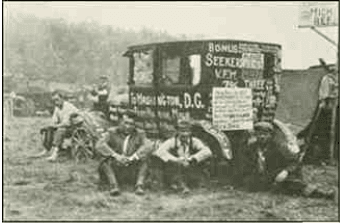
Bonus Army Protest
Public opinion of Hoover declined even more in the Summer of 1932. Twenty-thousand jobless WWI veterans, known as the Bonus Army, marched on Washington, D.C. to demand their pension bonus that was promised to be released to them in 1945.
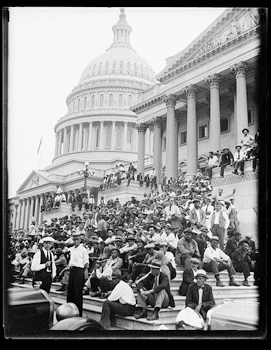
General Douglas MacArthur, Hoover's Chief-of-Staff, commanded the troops to evict the marchers who camped out in protest.
Bonus Army Incident
Two veterans ended up dying because of injuries sustained at the incident. Many Americans never forgave President Hoover for his use of force at the Bonus Army incident.
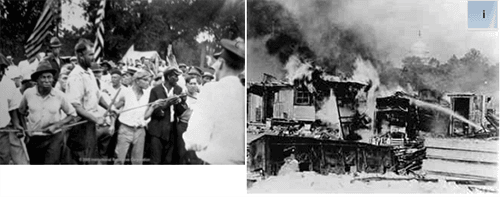
Changing of the Guard
Herbert Hoover ended his presidency with a very negative public opinion. After the deaths at the Bonus Army March, Hoover's reputation was never the same. Franklin D. Roosevelt won by a large margin at the 1932 election.
FDR Takes Over
Franklin Delano Roosevelt
Franklin Roosevelt, or FDR as he is affectionately known, was the Democratic candidate in the 1932 presidential election. He promised a new deal for Americans if elected, which created a spirit of optimism the country badly needed.
FDR was a Harvard graduate and the Governor of New York. As governor, he worked vigorously for depression relief and set up agencies to aid the poor.

He was also a victim of polio (a serious disease that affects the nerves of the spine and often makes a person permanently unable to move certain muscles), which seemed to give him a genuine compassion for ordinary people.
The First Lady
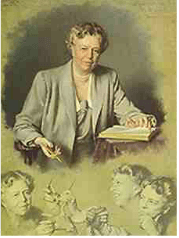
Eleanor Roosevelt was the wife and a distant cousin of FDR. She became his "legs" in the campaign and throughout his presidency. Mrs. Roosevelt toured the country to visit ordinary Americans. She held her own press conferences and was admired for her idealism.
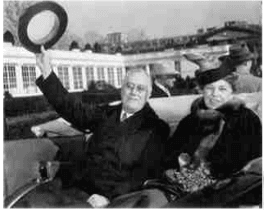
The Election of 1932
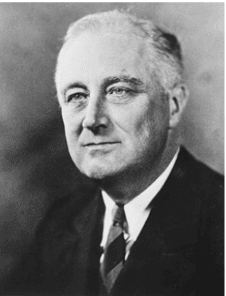
"[The 1932] campaign is more than a contest between two men, it is a contest between two philosophies of government."
FDR beat Hoover in a landslide victory
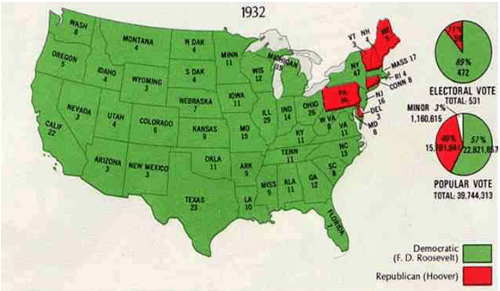
FDR Inauguration Speech
In his speech on Inauguration Day in March of 1933, FDR gave the people of America hope by saying, "...this nation asks for action and action now...the only thing we have to fear is fear itself."

The Roosevelt years changed the role of government in the everyday lives of its people and the way American society viewed the role of government.
End of an Era
By the mid-1930s, the changes brought about by the Great Depression made it clear that the boom times of the roaring 20s were gone.
Events in the lives of several famous icons of the 1920s marked an end to the good times.
- Al Capone was imprisoned for tax evasion.
- Babe Ruth retired in 1935.
- Calvin Coolidge died in 1933.
- Charles Lindbergh's toddler son was kidnapped and killed.
